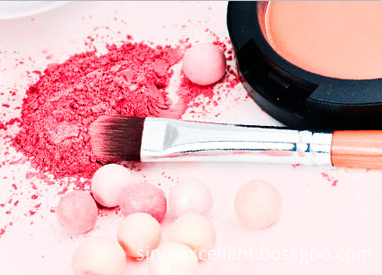Rice Fertilizer Requirements and Fertilization Technology Source: China Agricultural Net Technology Center Phosphorus fertilizer can promote root development and nutrient absorption, enhance tillering, increase starch synthesis, and promote grain filling.
Fertility requirement rice is one of the crops that require more fertilizer. Generally, for every 100 kg of rice produced, nitrogen (N) 1.6-2.5 kg, phosphorus (P2O5) 0.8-1.2 kg, potassium (K2O) 2.1-3.0 kg, nitrogen, Phosphorus, potassium need fertilizer ratio of about 2:1:3. The uptake of nitrogen by rice reached its peak at the peak of tillering and heading and flowering. Application of nitrogen fertilizer can increase the starch yield, and the starch yield is positively related to the size of rice grain, the level of yield, and the quality of rice. If the supply of nitrogen before heading is insufficient, it will result in reduced grain nutrients, insufficient grouting, and reduced rice quality. Phosphorus uptake by rice was not significantly different at each growth stage. The period of maximum absorption was from tillering to spikelet differentiation. Phosphorus fertilizer can promote root development and nutrient absorption, enhance tillering, increase starch synthesis, and promote grain filling. The uptake of potassium by rice is mainly from panicle differentiation to heading and anthesis, followed by till till panicle differentiation. Potassium is an essential nutrient for the synthesis of starch and cellulose and transportation in the body. It can increase the vitality of roots, delay leaf senescence, and increase the ability to resist pests and diseases. In addition, silicon and zinc micronutrients have a greater impact on rice yield and quality. Rice stems and leaves contain 10% to 20% of silicon dioxide, and application of silicon fertilizer can increase rice resistance to diseases and pests and lodging resistance, increase production, and improve rice quality; zinc fertilizer can increase rice effective ear The number of grains, grains per spike, and grain weight, etc., reduced the empty-slug rate and played a role in increasing production. The effect was more pronounced in calcareous soil. The application of silicon and zinc fertilizers has become more apparent in newly-changed paddy fields, acid soils, and cold-water immersed fields.
Fertilization Techniques Rice Field Fertilization Rice seedlings include water breeding, wet cultivation, dry farming, plastic film insulation, and two stages of breeding, plastic floppy disk breeding and other forms. Putian basal fertilizer should be re-applied with high-quality organic fertilizers. Organic fertilizers have long-term effects and nutrients, and contain a lot of nutrients necessary for rice growth. The organic fertilizer has high binding, adsorption and substitution, and it has the function of increasing soil aggregate structure and improving soil water and fertility. It is a good soil conditioner. Generally, 500-1,000 kg per mu are used, and 3-5 kg ​​of urea, 8-15 kg of ammonium phosphate, 7-8 kg of potassium chloride, or 20-30 kg of compound fertilizer per mu are applied per acre to achieve uniform fertilizer supply. Purpose, to promote seedlings Miao Qi. 4 to 5 days before transplanting, 6-7 kg of urea or 8-10 kg of high-nitrogen compound fertilizer is applied per acre as a delivery fertilizer to facilitate the return of green seedlings as soon as possible after transplanting and restore growth.
The application of organic manure should be applied to the base fertilizer of datian basal fertilizer Datian. Generally, 2000 to 3000 kilograms of Mushi is applied. Similarly, the application of chemical fertilizers should not be neglected. In the early stage of rice, no nitrate nitrogen was absorbed. Therefore, ammonium nitrogen is preferred as the nitrogen fertilizer. Generally, 7 to 8 kg of urea, 30 to 40 kg of superphosphate, and 8 to 10 parts of potassium chloride are used per mu. Kilograms or Mushi compound fertilizer (15%-15%-15%) 30-40 kilograms, the addition of 6-8 kilograms of silicon fertilizer per hectare, zinc sulfate 1 to 1.5 kilograms. Daejeon basal fertilizer should be applied in combination with cultivated rice fields before transplanting. It should be applied in a depth of 12 to 20 cm to keep the ammonium stable in an oxygen-deficient environment and prevent loss.
top dressing
(1) Apply fertilizer early. The tillering fertilizer is applied early after transplanting to green, so as to promote the growth of the low-section tiller, which has the effect of increasing the panicle. The tiller fertilizer is generally divided into two applications. The first time after returning green, 7 to 8 kg of urea or high-nitrogen compound fertilizer is applied in Mushi, and the appropriate amount of calcium sulfate and zinc sulfate are used to promote squatting; the second is during the period of childbirth. Mushi urea or high-nitrogen compound fertilizer 7 to 8 kilograms, to ensure that the entire field grows neatly, play a role in the preservation of clams into the ear.
(2) Qiao Shi panicle fertilizer. The second leaf of the rice begins to grow leaves. When the young ear is about 1 cm long, it is the basic period for ear formation and grain development. Ineffective delivery should be controlled. In this case, 8 to 12 kg of urea or 10 to 15 kg of high-nitrogen compound fertilizer can be topdressed per acre to ensure that sufficient nutrients in the middle stage turn to reproductive growth, increase the number of spikelets, prevent the degradation of spikelets, promote panicles, and increase grain weight. , Jian Ye, strong stalks, anti-loft effect. Small plots of small groups can be applied in advance to the time of panicle differentiation.
(3) make up fertilizer. From heading to maturity, to increase the seed-setting rate, ensure full maturity, and increase the number of grain weights. Fertilizer depends on the growth of rice may be, should not be less, generally 0.2% ~ 0.3% per acre spray of potassium dihydrogen phosphate solution 50 ~ 60 kg; after the symptoms of zinc deficiency, spraying 0.1% ~ 0.3% per acre The zinc sulphate solution is 50-60 kilograms; on the plots with chlorosis yellow before the heading, Mushi 3-4 kg or high nitrogen compound fertilizer 4-5 kg ​​can be applied. Supplementing granule fertilizer can effectively enhance the resistance and disease resistance of the plant; prolong the functional period of leaves and prevent premature senescence; improve the supply of oxygen in rice roots and increase the vitality of roots; accelerate grouting, promote ripening and full grain, thereby increasing rice yield. Improve rice quality. It should be noted that the fields in which the early fertile feet, excessive mid-delivery, excessive dark foliage, dark green leaves, poor light intensity among the groups, and late-maturing tendencies of greediness should not be subject to grain fertilizer.
In addition, the saline-alkali land should be washed and salt-washed before fertilizing. About 3 to 4 days before fertilization, pay attention to irrigation during the day and night drainage to prevent temporary salt accumulation from affecting the fertilizer effect.
Ginseng Leaf Extract;Ginseng Berry Extract;Plant sterol ester;Hyaluronic Acid etc. can be widely used in Cosmetic industrial for skin care,
As a very professional supplier of cosmetic in China, we always give our customers best support with good quality in every field, we instant we will be your reliable partner and business support.
Gingseng Leaf Extract UV80% Re 17% HPLC
Ginseng Berry Extract UV80% Re 20% HPLC
Plant sterol ester 70% from pine tree and soybean source
Sodium hyaluronate



Cosmetic
Cosmetic Raw Material,Leaf Extract,Panax Ginseng Berry Extract,Hyaluronic Acid
Excellent Health Products Co.,Ltd. , https://www.sino-excellent.com
